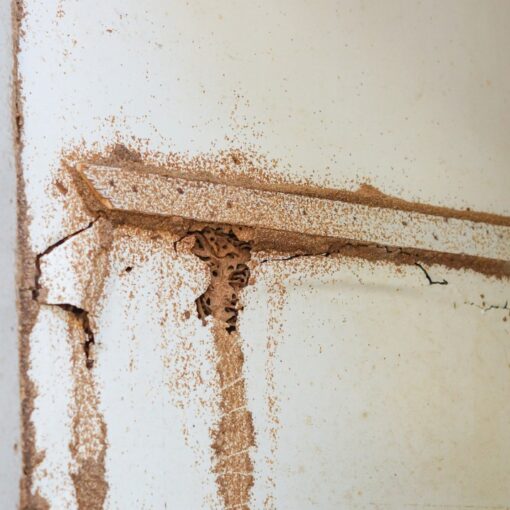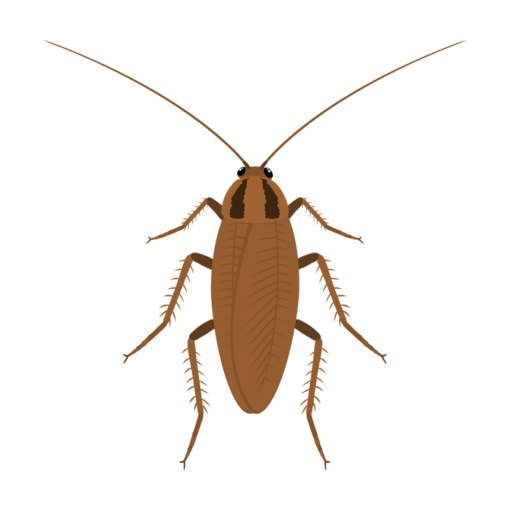Understanding the Importance of Sustainable Pest Control in Buckeye
In the heart of Arizona, the lively community of Buckeye thrives in the arid landscapes and thriving ecosystems. As the footprint of cities expands, the need to maintain an equilibrating balance between progress and conservation of the environment becomes more evident. The key to this balance is the nuanced issue of controlling pests in Buckeye, which is a multifaceted undertaking that goes beyond just the elimination of pests to include sustainable practices that are compatible with the local ecological system.
Embracing the Eco-Friendly Practices in Buckeye
This exploration focuses on the importance of adopting environmentally friendly practices and encouraging people to be stewards of their surroundings. Beyond the traditional methods of controlling pests, sustainable practices become the main principle, emphasizing the conservation of biodiversity and the overall well-being of Buckeye’s natural habitat.
Know Your Pests in Buckeye
In the intricate dance between urban life and the desert landscape of Buckeye, understanding the nuances of local pests is paramount for effective and sustainable pest management. This segment, dedicated to unraveling the intricacies of pest control in Buckeye, begins with a closer look at the common pests that often share our living spaces.
Identifying Common Pests in the Region
Among the foremost challenges between the urban and nature of the desert in Buckeye, knowing the subtleties of local pest issues is crucial to ensuring sustainable and efficient pest control. This segment, which is dedicated to unraveling the intricate details that are involved in pest management within Buckeye, begins with a look at the most common pests that inhabit our homes.
Behavior and Habitats of Buckeye’s Troublesome Pests
To overcome these challenges, it is crucial to study the habits as well as habitats of these threatening pests. Scorpions, for example, are predators of night that prefer dark, cool areas in the daytime. Understanding their behavior helps homeowners take preventative strategies to avoid encounters. Ants also build intricate colonies that require an extensive strategy to eradicate them from the root rather than just addressing obvious trails.
Termites, due to their quiet and destructive nature, usually remain unnoticed until damage has been done. The ability to recognize their love of dampness and wood is essential to detect and stop them early. Cockroaches are affluent and resilient and can flourish in all environments, which highlights their importance in a complete approach to pest control.
Creating a Pest-Resistant Landscape
In the search for eco-friendly pest control Buckeye, growing an environment that is pest-resistant becomes a crucial element of environmentally friendly and proactive pest control. One of the most effective strategies is to choose native plants to be used in Buckeye gardens, which are in line with the ecosystem in the region to repel pests and build the resilience of outdoor environments.
Choosing Native Plants for Buckeye Gardens
The native plants have evolved to adjust to the conditions of the climate and soil in Buckeye and make them naturally immune to a variety of local insects. When we incorporate native plants in the gardens, we can create an ecosystem that is harmonious and encourages beneficial insects as well as deters harmful ones. The result is a vibrant garden that is an effective aid in the fight against bugs.
Companion Planting Strategies
Companion planting is yet another valuable method of creating a pest-free landscape. By carefully arranging plants that complement one another, the homeowners can increase the garden’s durability. For instance, the aroma of certain flowers and herbs could act as an effective deterrent to insects, resulting in a more well-balanced and harmonious outdoor space.
Natural Barriers and Deterrents
Nature barriers, as well as deterrents, help to protect against insects. This is akin to physical barriers, such as fencing and plant arrangement, to stop the flow of pests into a vulnerable area. Furthermore, introducing elements such as aromatic plants, which deter insects with their scents, is an effective and non-intrusive efficient method of protecting the garden.
Integrated Pest Management
In the search for efficient pest control Buckeye, Integrated Pest Management (IPM) is recognized as an effective and sustainable method that focuses on a strategic mix of methods to reduce the negative impact of pests on the environment. At the heart of it all, IPM seeks to strike the right balance between the control of pests and protecting the environment by avoiding the use of blanket chemical solutions to favor specific, environmentally sustainable techniques.
Overview of IPM Principles
The principles of IPM require a comprehensive knowledge of the life cycle and behavior of the pests as well as the ecology of the region. When considering these aspects, people living in Buckeye can customize their strategies for controlling pests to be efficient and sustainable.
The unique environmental conditions of Buckeye have a major impact on the development of IPM methods that are appropriate for this region. The climate of the region is dry, and the specific nature of the area’s vegetation requires an individualized method. Plants that naturally resist common pests and adjust farming practices to meet the local climate are key elements in IPM within Buckeye. This nuanced understanding permits the development of a durable and sustainable pest control system.
Monitoring and Early Detection Strategies
The monitoring and detection of early signs are very important in successful IPM implementation. Monitoring the garden, landscape, or your home for evidence of pests can help residents take action at the very beginning of infestation. Through the use of traps, inspections by sight, and other tools for monitoring, people can spot the potential for problems before they get out of hand and reduce the necessity for more reactive and invasive control measures.
Beneficial Insects and Wildlife
In the intricate tapestry of pest control Buckeye and the surrounding areas, creating a flourishing community of beneficial wildlife and insects is a viable and sustainable method. Natural allies play a vital role in sustaining ecological balance. They are not just for pollination but also acting as efficient prey in our ongoing struggle against insects.
Encouraging Natural Predators
Encouraging natural predators in Buckeye is about creating habitats that attract beneficial insects, such as ladybugs, predatory insects, or parasitic wasps. By allowing these species to flourish, people can create a natural defense against common pests. Ladybugs, for example, are affluent consumers of aphids and are an issue that is often found in gardens. Through cultivating an environment that attracts and maintains ladybug populations, the residents help to create a healthier and more robust ecosystem.
Bee-Friendly Practices for Pollination and Pest Control
Additionally, bee-friendly practices do not just boost pollination but also help in the fight against pests. Bees, the primary pollinators of numerous plants, can be stimulated by the cultivation of bee-friendly crops and the avoidance of harmful pesticides. The wide variety of flowers not only attracts bees but also helps various beneficial insects that are essential to an active and healthy ecosystem.
Organic Pest Control Solutions
In the search for sustainable and eco-friendly pest control Buckeye, organic solutions appear as a potent weapon against common pests while steering away from synthetic chemicals that can affect the delicate ecological balance of the area. This segment focuses on the realm of organic pest control solutions, providing residents with effective and natural options for tackling unwanted pests.
DIY Pest Control Ideas Using Household Items
If you are a fan of more hands-on methods, DIY pest control ideas made from common household items are a simple and affordable method of dealing with the problem of pests. Ingredients such as baking soda, vinegar, neem oil, baking soda, as well as essential oils can be used to create powerful mixtures that are effective in repelling or removing pests without causing harm to the environment. From trailing ants to garden pests, These homemade remedies offer the environment a sustainable and non-toxic way to ensure a pest-free living space.
Organic Sprays and Applications
Organic sprays and applications that are derived from natural sources can further improve the arsenal of eco-friendly pest control. Neem oil, which is derived from the neem plant, is a powerful insect repellent that disrupts the cycle of life for various insects. Similar to garlic spray, chili pepper products act as deterrents against a variety of insects, providing an effective barrier against unwanted invaders.
Biological Pest Control Methods
Biological pest control techniques introduce the idea of employing living organisms to manage the population of pests. Beneficial insects like ladybugs, predatory beetles and nematodes are able to be introduced into the ecosystem to hunt commonly-found pests, offering a long-lasting and non-chemical solution. Utilizing the natural predators that are already in the Buckeye ecosystem, people can participate actively in the intricate choreography of pest control without the need for hazardous chemicals.
Sustainable Practices for Indoor Pest Control
To ensure sustainable pest control Buckeye, paying attention to indoor spaces is crucial to creating a healthy living space. The most sustainable methods for indoor pest control don’t just concentrate on the well-being of the residents but also enhance the overall well-being of the neighborhood. This section focuses on safe and non-toxic techniques that are accompanied by preventive strategies that promote an environmentally sustainable method within the walls of our dwellings.
Safe and Non-Toxic Methods for Indoor Spaces
Safe and non-toxic methods for controlling pests in the home concentrate on avoiding solutions containing chemicals that could be harmful to people living in the area and the natural environment. Natural repellents, such as essential oils such as peppermint, lavender, and citrus, for example–can be used to effectively deter common indoor pests without damaging the indoor air quality. These scents not only give a pleasant aroma but also serve as effective barriers against intruders.
Prevention Strategies to Keep Pests Out
Prevention strategies play a crucial role in keeping a healthy indoor environment that is pest-free. Repairing gaps and cracks in doors, windows, and walls is an essential step to block pests access points. Regular cleaning practices, such as the quick removal of food debris as well as appropriate waste management, can remove any attractants that could lure pests inside. Also, an uncluttered lifestyle reduces places for pests to hide and reduces the chance of infestations.
Water Conservation and Pest Control
In the constantly changing landscape of pest control Buckeye, the connection between water conservation and efficient pest control is a vital element that is often left unnoticed. Water conservation practices that are sustainable not only help to protect the environment but also play an important function in minimizing the conditions that contribute to the spread of pests. This segment examines the relationship between conservation of water and pest control. It provides information on the management of water sources and adopting eco-friendly irrigation methods in Buckeye.
Managing Water Sources to Reduce Pest Attraction
The strategic management of water sources is essential to decreasing the attraction of insects. Standing water, which is often unintentionally collected in untreated areas, can become a place for mosquitoes and other insects to breed. Regularly examining and fixing any potential water accumulations, like blocked gutters or poorly drained plant saucers, can reduce the chance of creating a habitat that draws insects.
Sustainable Irrigation Practices
Sustainable irrigation practices also aid in the effective control of pests in Buckeye. The drip systems, for example, provide liquid water straight to the root of plants, which reduces excessive moisture on the surface. This is not just a way to conserve water, but it also decreases conditions that encourage the growth of soil-dwelling insects. In addition, following irrigation schedules based on the needs of specific plants can help keep the soil’s moisture levels at optimum levels, which discourages pests that thrive in damp conditions.
Community Involvement and Education
In the pursuit of sustainable pest control Buckeye, community involvement, participation from the community, and education become powerful catalysts for creating sustainable changes. Realizing that fighting insects is a collaborative effort, This segment examines the significance of working together and the importance of education and awareness to build a stronger and sustainable Buckeye community.
Collaborative Efforts
Collaborative efforts for sustainable pest control require the active involvement of residents, community members, organizations, and even authorities. By uniting forces, citizens are able to share knowledge, experiences, and effective strategies for managing pests sustainably. Community-led initiatives, such as community clean-ups and shared garden spaces, don’t just enhance the overall aesthetic appeal of Buckeye but also aid in the elimination of pest-friendly areas.
Raising Awareness and Educating the Community
Raising awareness and informing the population are essential steps toward establishing the foundation for ecological pest management. Seminars, workshops, and informational events can help spread knowledge on sustainable methods, the identification of common pests, as well as the application of sustainable strategies. When residents are well-informed and responsible stewards of their surroundings, the community is empowered to take actions that decrease the need for harmful pesticides and encourage an environment that is more harmonious with nature.
Additionally, educating the local community goes beyond the adults and includes schools, youth groups, and local events. Instilling a sense of environmental responsibility in the young generation, Buckeye ensures a sustainable tradition of pest management practices. Youngsters and children, armed with information about the local ecosystem, are able to take part in community-based initiatives and projects that contribute to the protection of the region’s unique biodiversity.
Conclusion
Buckeye’s path to sustainable pest control blends urban living with desert landscapes. Embracing eco-friendly practices, fostering community collaboration, and mindful learning makes for a more resilient environment that fosters a balanced and active community.





